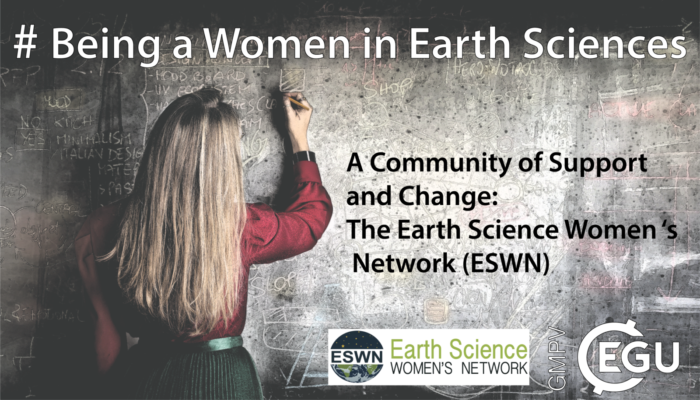
The Earth Sciences are one of the least diverse disciplines in sciences all around the world (Marín-Spiotta et al., 2020). Often this causes discrimination and bias and might even reach up to bullying and sexual harassment at the workplace (Cantor et al., 2019; Marín-Spiotta et al., 2020). This leads to an underrepresentation of Black and African American, Hispanic, Latinex, and Asian graduate students but also applies to the representation of women in the field (Wilson 2018, Gonzales 2019). In general women represent already a minority in the STEM fields with only 30% of the employees being women, in earth sciences, however, this number is even smaller: only 20% of faculty positions in earth sciences are held by women (Gonzales, 2019; Wilson 2017, 2019).
Here Maura Hahnenberger, an Associate professor in geosciences at Salt Lake Community College and a member of the Associate Board of Directors of the Earth Science Women’s Network tells us about her journey in the earth sciences and the difficulties she faced as part of a minority and how being a member of the Earth Sciences Women Network helped her pursuing her career:
My “origin story” of how I ended up in the earth sciences is equal parts upbringing, passion, and happenstance. My upbringing resonates with considerable privilege being white, cisgender, heterosexual, generally able bodied, and raised by two educators both with college degrees. These two amazing parents also instilled in me an ongoing passion for the natural world, that was fostered by our many trips to National Parks, trails, and mountains. So, as I neared the end of high school, I was certain about two things. First, I wanted to attend college. Second, I wanted to study science. But how I ended up in meteorology and atmospheric sciences was a bit happenstance.
Part of the backstory is I am an enthusiastic performing artist and always wondered if that was something I would continue after high school. Well, one day I was watching the local news and on came the TV meteorologist and I had an epiphany. This person was a scientist AND they got to perform on TV! So, I quickly decided that I would become a meteorologist… but my TV dreams did not last long. But the love of meteorology and atmospheric sciences stuck.
What I didn’t realize when I chose this field is that it has some of the lowest gender, racial, and ethnic diversity of any of the sciences, with only about 1 in 4 degree recipients being women and about 1 in 4 being people of color (Canetto et al. 2012; USDOE, 2017). When I started college, I was surprised that only 1 of the 8 faculty in the department were women, which, I learned later, was similar across the field. In atmospheric sciences women make up less than 1 in 5 tenure-track or tenured faculty, and the proportion of female faculty declines as academic rank increases (MacPhee and Canetto, 2015).
As I progressed through my undergraduate program, I felt hampered by this lack of female role models. It was hard to find mentors who understood my many desires both personally and professionally. But early in my undergraduate career I was fortunate that a colleague told me about an e-mail listserv specifically for women in the earth sciences, aptly named the Earth Science Women’s Network (ESWN). This community suddenly transformed my previous rather lonely existence as a woman in the atmospheric sciences into one where at my fingertips I had access to colleagues, mentors, and eventually friends who were not only supportive but more importantly champions of women in science.
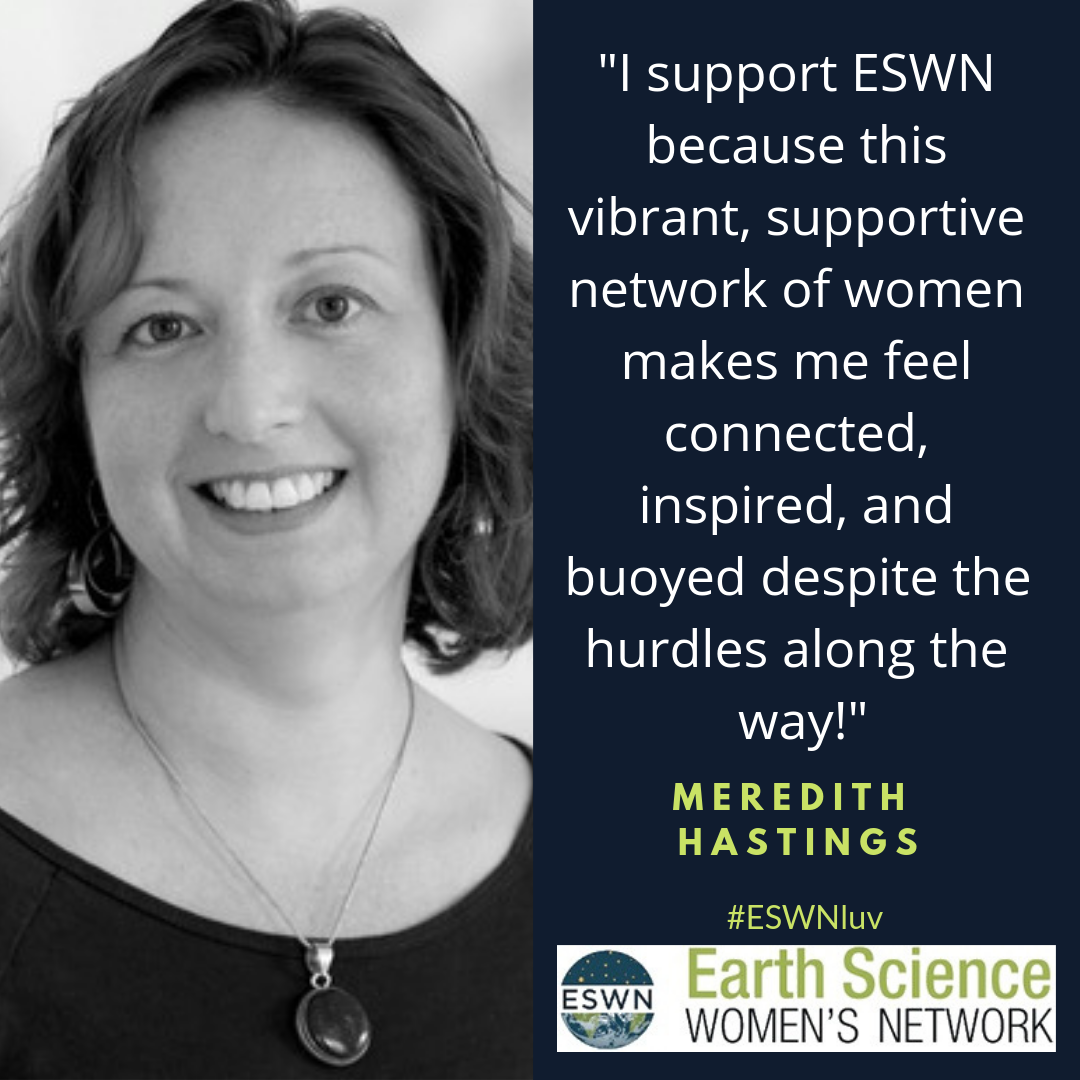
Photograph of Meredith Hastings and Earth Science Women’s Network logo with quote reading, “I support ESWN because this vibrant, supportive network of women makes me feel connected, inspired, and buoyed despite the hurdles along the way!”
Where We Started
ESWN began in 2002 as a group of six early career earth scientists who created an informal peer mentoring group. As these women realized the immense benefits they received from this network, they sought to expand its reach, which began as that e-mail listserv I discovered during my undergraduate years. Grant funding and generous donations allowed the network to expand its website and online communications and in 2014 ESWN incorporated as a non-profit.
Even in pre-pandemic times ESWN’s activities have mostly been online, originally on the listserv, but now in the >7,000 member Facebook Discussion Group, on social media, and on our new discussion platform in partnership with the American Geophysical Union (AGU). But in person networking receptions and professional development workshops have also been a cornerstone of ESWN’s success. I remember attending one of my first AGU Fall Meetings in San Francisco and experiencing overwhelm at the size and scope of the event. But at the ESWN networking reception I found connections with women in a friendly and welcoming setting that helped me feel welcome and less alone.
Mentoring is a key value in ESWN, and one of the most memorable ESWN workshops I attended was one on mentor mapping. It was there I first realized to not rely on just one person to be your mentor, but that as scientists and women we all need a robust network of mentors that will fulfill different needs as we progress professionally (Glessmer et al., 2015; Adams et al., 2016).
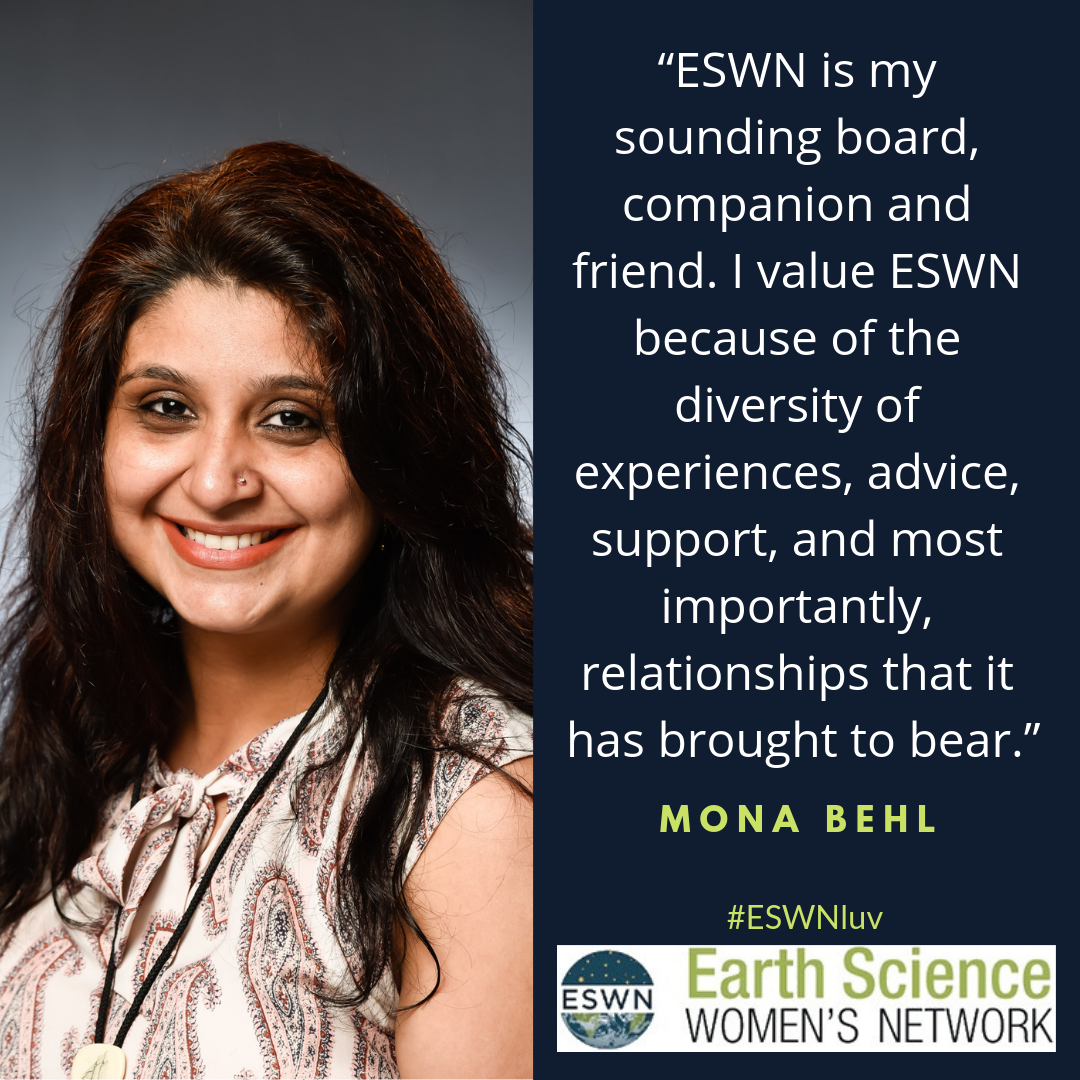
Photograph of Mona Behl and the Earth Science Women’s Network logo with quote reading “ESWN is my sounding board, companion and friend. I value ESWN because of the diversity of experiences, advice, support, and most importantly, relationships that it has brought to bear.”
Where We Are Going
While over its almost 20-year history ESWN has helped make progress on supporting the scientists of today and welcoming the scientists of tomorrow, we still face many struggles for women in the earth sciences. Two of the most pressing are the persistence of harassment and bullying and the intersectionality between racial justice and gender equality. An important current initiative (ADVANCEGeo) is training administrators and departments on how to effectively address bullying and harassment in the scientific workplace and create environments that are welcoming and inclusive (Marin-Spiotta et al., 2020).
ESWN continues to strive to both create a welcoming community, and also help move the needle with institutional change in professional societies, universities, and even at conferences. In collaboration with 500 Women Scientists we recently published a guide to Inclusive Scientific Meetings, that can be used by conference organizers to incorporate a structure for inclusion that will benefit all scientists.
As I enter (dare I say it!) mid-career, I have started to reflect on where I have and haven’t seen progress for women in science. I now see much more openness to discuss and address the struggles of women and people of color in the sciences; I see early career women who have found their voice to speak up for what they need and mid and late career scientists heed that call to make substantive changes; and that department I started in that had only 1 woman of 8 faculty now has 2 women of 12 faculty (ok, admittedly not much progress there). I hope to continue this journey with you, so join us as part of the Earth Science Women’s Network (ESWN).
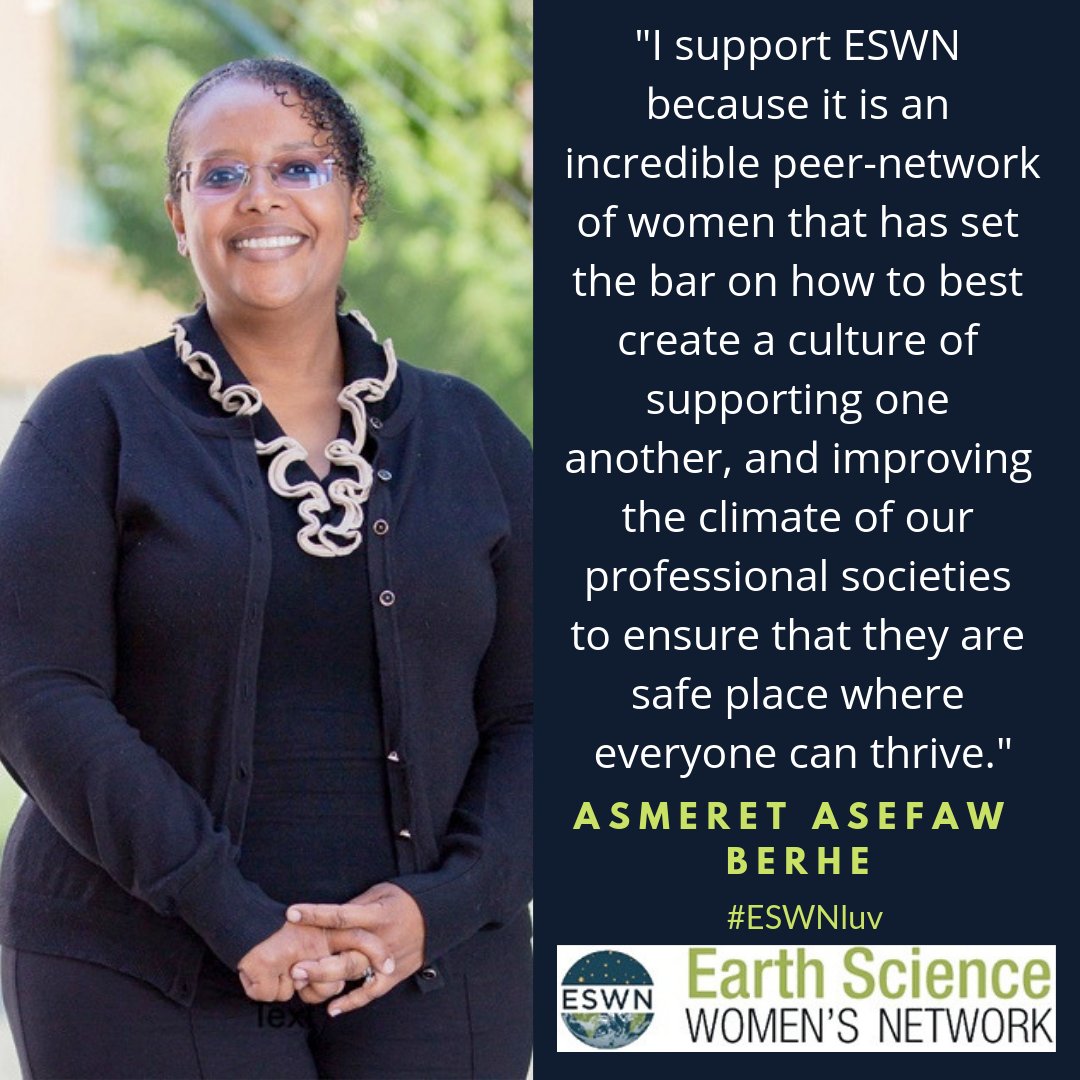
Photograph of Asmeret Asefaw Berhe and Earth Science Women’s Network logo with quote reading “I support ESWN because it is an incredible peer-network of women that has set the bar on how to best create a culture of supporting one another, and improving the climate of our professional societies to ensure that they are a safe place where everyone can thrive.”
To join and learn more about the Earth Science Women’s Network (ESWN) visit our website.
References Adams, A.S., Steiner, A.L., Wiedinmyer, C., 2016. The Earth Science Women’s Network (ESWN): Community-Driven Mentoring for Women in the Atmospheric Sciences. Bulletin of the American Meteorological Society, 345-354. https://doi.org/10.1175/BAMS-D-15-00040.1 Canetto, S.S., Trott, C.D., Thomas, J.J., Wynstra, C.A., 2012. Making Sense of the Atmospheric Science Gender Gap: Do Female and Male Graduate Students Have Different Career Motives, Goals, and Challenges? Journal of Geoscience Education, 60, 408-416. https://doi.org/10.5408/12-296.1 Cantor, D., Fisher, B. S., Chibnall, S., Harps, S., Townsend, R., Thomas, G., Lee, H., Kranz, V., Herbison, R., and Madden, K., 2019. Report on the AAU Campus Climate Survey on Sexual Assault and Misconduct, The Association of American Universities, Westat, Rockville, Maryland, 433 pp. Glessmer, M.S., Adams, A., Hastings, M.G., Barnes, R.T., 2016. Taking ownership of your own mentoring: Lessons learned from participating in the Earth Science Women's Network. The Mentoring Continuum: From Graduate School Through Tenure. ed. Glenn Wright, Syracuse: The Graduate School Press of Syracuse University, p113-132. Gonzales, L., 2019. Participation of women in the geoscience profession, Geoscience Currents Data Brief 15, American Geosciences Institute, 1–2. MacPhee, D., Canetto, S.S., 2015. Women in Academic Atmospheric Sciences. Bulletin of the American Meteorological Society, 96(1), 59-67. https://doi.org/10.1175/BAMS-D-12-00215.1 Marín-Spiotta, E., Barnes, R.T., Berhe, A.A., Hastings, M.G., Mattheis, A., Schneider, B., Williams, B.W., 2020. Hostile climates are barriers to diversifying the geosciences, Diversity and equality in the geosciences special issue. Advances in Geosciences (ADGEO) Journal, 53, 117–127. https://doi.org/10.5194/adgeo-53-117-2020 U.S. Department of Education, National Center for Education Statistics, Integrated Postsecondary Education Data System (IPEDS), 2017. https://nces.ed.gov/ipeds/ Wilson, C. E., 2017. Female geoscience faculty representation grew steadily from 2006–2016, Geoscience Currents 119, American Geosciences Institute. Wilson, C. E., 2019. Percentage of female faculty working within geoscience research fields, Geoscience Currents 136, American Geosciences Institute.

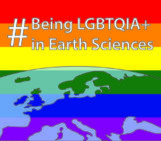
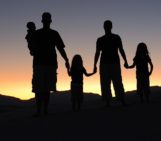
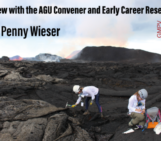
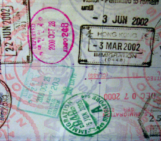
Pingback: GeoLog | A helping hand: what career support does EGU offer?